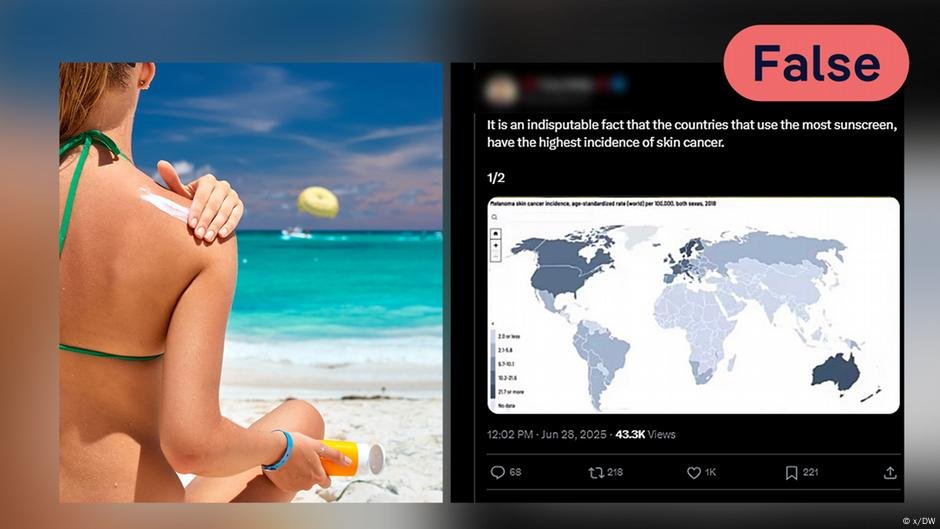The Truth About Sunscreen: Separating Fact from Fiction
Understanding the Myths Surrounding Sunscreen and Skin Cancer
Recent social media claims suggest that using sunscreen may increase the risk of skin cancer, despite scientific consensus that ultraviolet (UV) radiation is the primary cause of melanoma. Many posts assert that countries with high sunscreen usage also have high skin cancer rates. However, these claims lack scientific backing.
Are Sunscreen and Skin Cancer Linked?
One viral post from a user on X (formerly Twitter) stated, "It is an indisputable fact that the countries that use the most sunscreen have the highest incidence of skin cancer." This claim amassed significant attention, garnering nearly 60,000 followers. However, DW Fact Check has labeled this assertion as false, supported by experts like Brittany Schaefer from the Connecticut State Department of Public Health. She emphasized:
"There is no scientific evidence that supports the association of sunscreen use with a higher risk of cancer."
Debunking Misleading Data
A chart circulating on social media falsely attributed cancer incidence data to the Connecticut Tumor Registry. Schaefer clarified that the registry had not issued any such graphics, indicating that the figures were manipulated and misleading.
Why Are Skin Cancer Rates Rising?
Despite an increase in sunscreen usage, global skin cancer cases are rising. A 2023 multi-country study examined various hypotheses, suggesting that several factors may contribute:
- Better Diagnostics: Increased awareness and better diagnostic methods lead to more reported cases.
- Outdated Research: Previous studies may not reflect the effectiveness of newer sunscreen formulations.
- Inconsistent Application: Many people do not apply sunscreen adequately.
- Climate Change: More sun exposure due to changing weather patterns contributes to higher skin cancer rates.
Global Skin Cancer Incidence: A Closer Look
According to the World Health Organization’s International Agency for Research on Cancer, Australia had the highest age-standardized incidence rate in 2022, with 37 new skin cancer cases per 100,000 people. Other countries with high rates include:
- Denmark: 31.1 cases
- Norway: 30.6 cases
- New Zealand: 29.8 cases
- Sweden: 27.4 cases
The U.S. reported the highest total number of skin cancer cases, with 101,388 incidents in 2022. However, the mortality rate has decreased due to advancements in treatment, underscoring the importance of early detection and intervention.
Exploring Sunscreen Usage Patterns
While sunscreen sales are rapidly increasing—projected to reach $13.553 million globally by 2028—actual usage rates vary:
- Australia: Only 38% of residents use SPF 30 or higher on most days.
- U.S. Poll: 41% of surveyed adults wear sunscreen more than 60 days a year, with 13% reporting they never use it.
- Germany: Around 50% of respondents only use sunscreen in summer or under direct sunlight.
The Need for Comprehensive Data
Sybille Kohlstädt, a spokesperson for the German Cancer Research Center, cautioned against jumping to conclusions due to the lack of comprehensive data connecting sunscreen usage with skin cancer prevalence. The existing statistics on rising global cancer rates do not provide a clear picture of sunscreen practices among different populations.
Conclusion: Sunscreen Remains Essential
The proliferation of false information surrounding sunscreen use emphasizes the need for reliable education on skin protection. While misunderstandings persist, sunscreen remains a critical tool in protecting against skin damage from UV rays. Always consult reputable sources or health organizations for accurate information on skin protection and cancer prevention.
By dispelling myths and focusing on evidence-based practices, we can effectively fight against skin cancer risks and promote healthier behaviors. Always apply sunscreen as recommended, reapply regularly, and seek shade to safeguard your skin.


